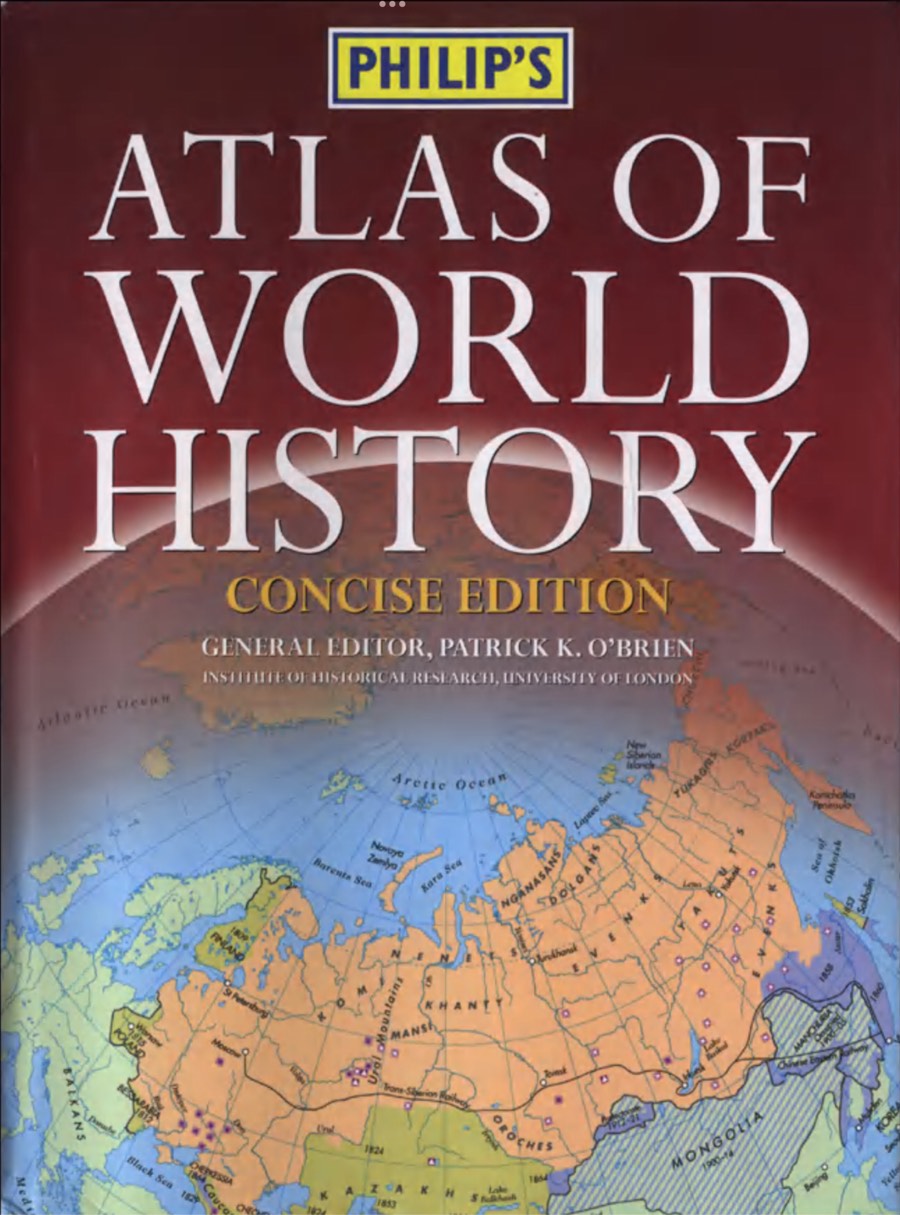Atlas of World History
Summary of Philip’s Atlas of World History
Philip’s Atlas of World History is a comprehensive visual and narrative journey through human history, spanning from early hominid evolution to the modern globalized world. Designed by historians and educators, it integrates maps, timelines, and scholarly insights to present the global historical narrative in an accessible way.
Key Themes and Structure:
1. The Human Revolution (5 million years ago – 10,000 BC):
• Traces human evolution from early hominids in Africa to the global spread of Homo sapiens.
• Emphasizes migration during ice ages, use of tools, fire, and early shelters.
• Early societies were hunter-gatherers, eventually leading to settled agriculture.
2. From Hunting to Farming:
• Between 10,000 BC and 3000 BC, agriculture developed independently in regions like the Fertile Crescent, China, and Mesoamerica.
• Pottery, domesticated plants and animals, and permanent settlements emerged.
• Farming led to larger, more stable communities and enabled societal complexity.
3. The First Civilizations (4000–500 BC):
• Civilizations arose in Mesopotamia, Egypt, the Indus Valley, China, and Mesoamerica.
• Featured centralized authority, social hierarchies, writing, monumental architecture, and organized religion.
• Ironworking spread, enhancing tools and weaponry.
4. Empires and Religion:
• From 500 BC to AD 500, powerful empires like Rome and Han China dominated vast territories.
• Religions like Hinduism, Buddhism, Judaism, Christianity, and Zoroastrianism developed and spread.
5. The Medieval World (AD 500–1500):
• Rise of Islamic caliphates, the Byzantine Empire, feudal Europe, African kingdoms, and Asian states.
• Trade networks expanded across Asia, Africa, and Europe.
• Religious and cultural exchanges flourished.
6. The Early Modern World (1500–1800):
• European exploration and colonization reshaped global interactions.
• Atlantic slave trade, urbanization, and the Scientific Revolution are highlighted.
• Empires in Asia and Africa confronted or adapted to European expansion.
7. The Age of Revolutions (1770–1914):
• Covers the American, French, and Industrial Revolutions.
• National unifications (Italy, Germany), decline of empires (Ottoman, Qing), and imperial expansions.
• Growing industrialization transformed societies and economies.
8. The Twentieth Century:
• Focus on World Wars, the Cold War, decolonization, and global economic integration.
• Includes developments in human rights, gender equality, health, environment, and technological changes.
• Highlights interconnectedness and challenges of globalization.
Purpose and Vision:
• This atlas aims to provide a global, non-Eurocentric perspective.
• It emphasizes connections (trade, war, migration) and comparisons (political systems, religions, economies).
• Designed for students, educators, and general readers, it supports courses in world history and encourages a cosmopolitan outlook.

